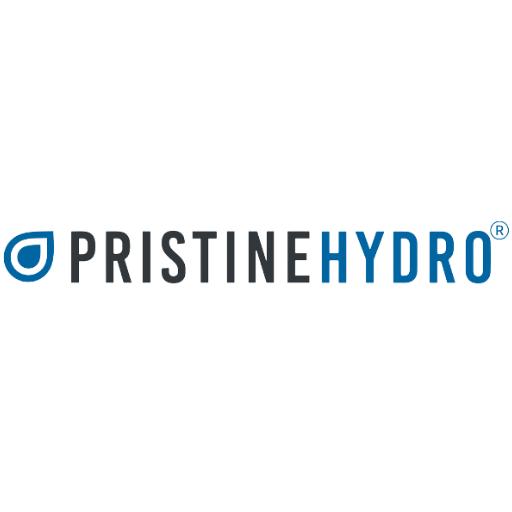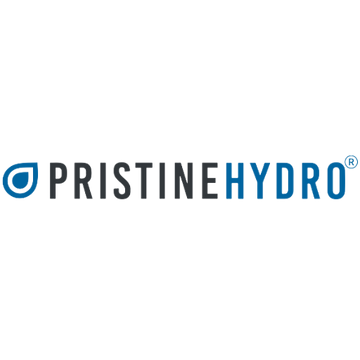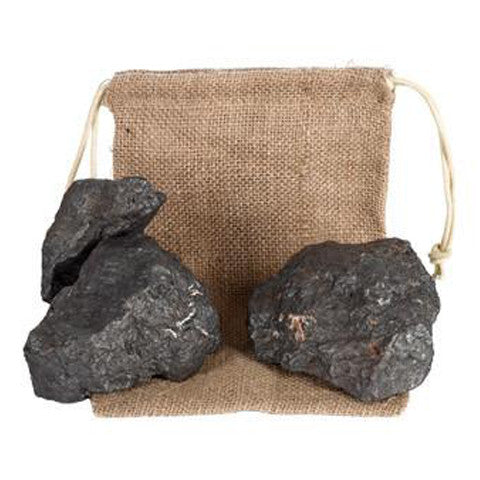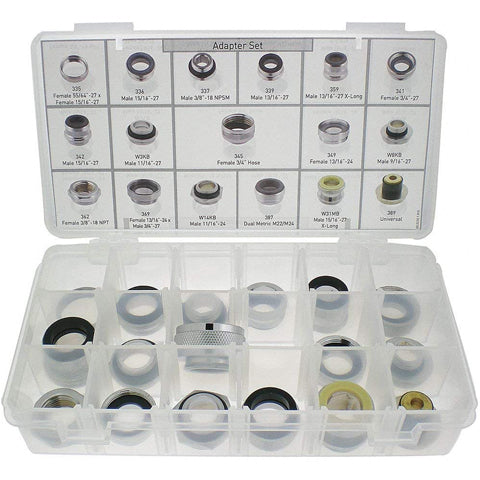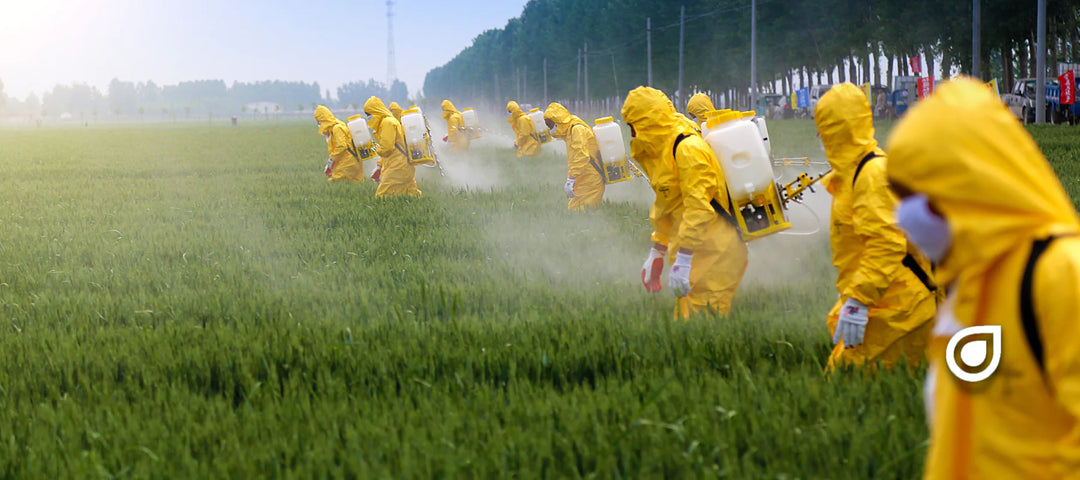PFAS 'Forever Chemicals: Everything You Need to Know & Proactive Measures
If you've been following the news recently, you may have heard about the dangers of PFAS chemicals. These "forever chemicals" are everywhere daily, from plastics and food packaging.
In January of 2020, laboratory tests commissioned by EWG reported for the first time that they'd found the toxic fluorinated chemicals known as PFAS in the drinking water of dozens of U.S. cities, including major metropolitan areas.
"Of tap water samples from 44 places in 31 states and the District of Columbia, only one location had no detectable PFAS, and only two other locations had PFAS below the level that independent studies show pose risks to human health. Some of the highest PFAS levels detected were in samples from major metropolitan areas, including Miami, Philadelphia, New Orleans and the northern New Jersey suburbs of New York City.
In 34 places where EWG’s tests found PFAS, contamination has not been publicly reported by the Environmental Protection Agency or state environmental agencies. Because PFAS are not regulated, utilities that have chosen to test independently are not required to make their results public or report them to state drinking water agencies or the EPA."
Many of you have seen the coverage of the East Palestine, Ohio incident... Did you know that's just one of many so far in 2023?

📷 Map of reported chemical accidents in the US created by Coalition To Prevent Chemical Disasters. Red icons indicate accidents from 1 January to 31 December 2022. Purple icons indicate accidents since 1 January 2023. Last year the coalition recorded 188, up from 177 in 2021. Tallying more than 470 since it started counting in April 2020. Photograph: Coalition To Prevent Chemical Disasters
The more we uncover about PFAS, the clearer it becomes that the Health risks may be underestimated.

So, What Are These PFAS "Forever" Chemicals?
The per- and polyfluoroalkyl substances (PFAS) are a diverse group of synthetic chemicals used in products such as nonstick cookware, stain-repellent and waterproof compounds for various types of clothing, firefighting foams, and paper packaging for food and many other daily household products. They have been linked to health problems like cancer, thyroid disease, hormone disruption, and reproductive issues. These chemicals are called "forever chemicals" because they don't break down in nature and can be passed from mother to child through the placenta or breast milk.
Where Do PFAS Chemicals Come From?
These PFAS chemicals were invented by 3M in 1946. 3M sold their toxic chemicals to DuPont, who introduced non-stick cookware.
The attributes of repelling dirt, grease, and water with heat resistant capabilities led to product expansion. Overtime more unique use cases entered the market. Everything from the many non-stick cookware products to various fabric protectors -- to many or even most of the household goods throughout your house, today.
The industrial use accelerated as well. These chemicals are everywhere. You may have seen reports about the firefighting foam application, where an incident occurred at Camp Lejeune Marine Corps Base in North Carolina, where hundreds of thousands of veterans and family members were exposed to high levels of PFAS contamination from drinking contaminated water for decades.
In July of 2018 an article was published by The Intercept titled, "3M Knew About The Dangers of PFOA and PFOS Decades Ago...
"Internal studies and other documents show that 3M knew by the 1970s that PFOA and PFOS were toxic and accumulating in people's blood...
"Environmental Protection Agency pressured the federal Agency for Toxic Substances and Disease Registry to suppress a study showing PFAS chemicals to be even more dangerous than previously thought...
"The dangers presented by these industrial chemicals have been known for decades, not just a few months or years. A lawsuit filed by Minnesota against 3M, the company that first developed and sold PFOS and PFOA, the two best-known PFAS compounds, has revealed that the company knew that these chemicals were accumulating in people’s blood for more than 40 years...
"3M researchers documented the chemicals in fish, just as the Michigan scientist did, but they did so back in the 1970s. That same decade, 3M scientists realized that the compounds they produced were toxic. The company even had evidence back then of the compounds’ effects on the immune system...
For more information on how the heck this could have happened:
Download this report by EWG below:
"For 50 Years, Polluters Knew PFAS Chemicals Were Dangerous But Hid Risks From Public. As far back as 1950, studies conducted by 3M showed that the family of toxic fluorinated chemicals now known as PFAS could build up in our blood. By the 1960's, animal studies conducted by 3M and DuPont revealed that PFAS chemicals could pose health risks. But the companies kept the studies secret from their employees and the public for decades.
Over 700 pages of documentation breaking down the entire 3M x DuPont timeline...
What Are the Dangers of PFAS?
Today, we believe it's about more awareness, one by one, everyone should know about the dangers of these toxic chemicals. The entire family... which is large. As soon as a regulation preventing the use of a new type would come out--a slightly different variation would appear. Outpacing the regulators, safety agencies, states, governments, and consumers ability to research and investigate.
The major obstacle is that even with many companies already shifting away from the use of chemicals within the PFAS family, the exposure over-time has resulted in a mass contamination crisis--where these 'Forever Chemicals' have infiltrated our soil, ground water, households via clothing and daily use goods to the air we breathe.
Some of the reported health hazards associated with PFAS exposure include:
● Adverse reproductive outcomes include low birth weight, preterm birth, stillbirths, and miscarriage;
● Increased cholesterol levels;
● Increased risk for liver damage;
● Increased risk for kidney damage;
● Increased risk for thyroid disease;
● Altered immune function
Here is a closer look at the Human health impacts of exposure to plastic-associated chemicals:

What Risks Exist For PFAS Exposure?
NOTE: Drinking water is not the sole route of PFAS exposure for most Americans... The EPA includes several important assumptions in their *risk calculations. They assume the exposure to PFAS being 20% via drinking water and the remaining from sources 'other than', many of which are not regulated by the EPA or by states yet.
PFAS are a group of chemicals used in a wide range of products and materials, including clothing, shoes, cosmetics, personal care products, food containers, baby bottles and baby teethers, furniture padding and upholstery, and carpeting, firefighting foams, cleaning products and paints. The chemicals are also heavily used in many industrial processes.

Environmental Science & Technology Letters 2022 9 (4), 320-326
March 30, 2022
via American Chemical Society
"Facemasks are important tools for fighting against disease spread, including Covid-19 and its variants, and some may be treated with per- and polyfluoroalkyl substances (PFAS). Nine facemasks over a range of prices were analyzed for total fluorine and PFAS. The PFAS compositions of the masks were then used to estimate exposure and the mass of PFAS discharged to landfill leachate. Fluorine from PFAS accounted only for a small fraction of total fluorine. Homologous series of linear perfluoroalkyl carboxylates and the 6:2 fluorotelomer alcohol indicated a fluorotelomer origin. Inhalation was estimated to be the dominant exposure route (40%–50%), followed by incidental ingestion (15%–40%) and dermal (11%–20%). Exposure and risk estimates were higher for children than adults, and high physical activity substantially increased inhalation exposure. These preliminary findings indicate that wearing masks treated with high levels of PFAS for extended periods of time can be a notable source of exposure and have the potential to pose a health risk. Despite modeled annual disposal of ∼29–91 billion masks, and an assuming 100% leaching of individual PFAS into landfill leachate, mask disposal would contribute only an additional 6% of annual PFAS mass loads and less than 11 kg of PFAS discharged to U.S. wastewater.
--> Read full report Online or download PDF.
What About PFAS in Our Food?
The last update on the PFAS page of the U.S. Food & Drug Administration (FDA) was July 6, 2022.
"Through the FDA's testing of foods grown or produced in areas with known environmental PFAS contamination, it's clear that PFAS in the soil, water, or air can be absorbed by plants and animals, leading to contaminated foods.
"The FDA’s analytical method is validated for each type of PFAS. The types of PFAS that the FDA tests for is dependent on their expected uptake to foods and on the availability of chemical standards (i.e., the unique chemical fingerprint that allows us to separately detect and measure each PFAS). For example, in the FDA’s 2022 survey of seafood some of the PFAS that were added to our method had been identified in the literature as being more prevalent in seafood.
This is going to be one heck of a reconciliation process... Consider the amount of food that requires testing and then consider the reality that they're only able to test for the unique chemical fingerprint of a small set of PFAS types, where the focus is on those where environmental contamination has occurred - at this time that number is six.
Also note, the packaging used for foods. Paper products like pizza boxes, microwave popcorn bags, fast food wrapping, candy wrappers i.e. your favorite bag of chips or candy bar.
In 2016, the FDA found PFAS in a wide range of foods, including:
● Ice cream sandwiches
● Packaged taco salads
● Canned chicken noodle soup
● Packaged chocolate cake mix
● Pizza that contains cheese or tomato sauce
Lots of work to be done. Here's a link to the FDA PFAS Substances page that's facilitating their progression, here.
For more information on the federal government’s approach for reducing exposure to PFAS, please see:
- Fact Sheet: Biden-Harris Administration Combatting PFAS Pollution to Safeguard Clean Drinking Water for All Americans (2022)
- Fact Sheet: Biden-Harris Administration Launches Plan to Combat PFAS Pollution (2021)
PFAS In Cosmetics
PFAS in cosmetics is a relatively new concern. Some companies use PFAS in manufacturing to prevent water from sticking to their products. However, they have switched to other compounds that don't cause as much concern over health effects. The problem is that there needs to be more information on how these new compounds interact with our bodies or the environment, as PFAS did. The FDA has asked cosmetic companies not to use them but hasn't banned them.
PFAS Toxic Chemicals In Clothing and Home Goods?
Yes, some of our favorite athletic and outdoor apparel brands have received low grades for elevated levels lead, chromium, phthalates, polyfluoroalkyl substances (PFAS) and brominated flame retardants.
All of which, even at low levels absorbed through our skin, create havoc within the immune system. Exposure to these toxic substances over time can elevate risk of serious health conditions.
Why are manufacturers using these toxic chemicals?
- PFAS: These lab-grown chemicals are water-resistant and found in waterproof or stain-resistant gear.
- Phthalates: Used to soften ink on screen prints. Linked to early deaths in American adults, especially due to heart disease, and can disrupt the body's hormones.
- Brominated Flame Retardants: Sometimes found in children's pajamas to protect them from fire. Banned in Europe, these are known to change thyroid functions and alter the way the body processes fats and carbs. More research is being done to identify whether there is a link between flame retardant exposure and ADHD.
- Chromium: Typically used in leather products because it makes the leather more pliable. Known to weaken the immune system and lead to liver and kidney damage.
- Lead: A way to help lower the cost of goods. Used as a cheap metal for zips and a low-cost pigment. Significant childhood lead exposure can lead to long-term developmental problems.
As more awareness to these issues come to light, many smaller brands and local manufacturers are being proactive, however, most of the large brands have not cleaned up their act...
According to a report covered in November of 2022 by Business of Fashion,
"Nearly all of the 30 major American clothing and footwear brands assessed by the non-profit National Resource Defense Council still allow PFAS in their supply chains, and nearly two-thirds have weak commitments to eliminate them.
Developing alternatives that can compete on price, performance and scale has proved a mammoth, industry-wide challenge that has made little progress.
New regulations are coming out... but it's clear there needs to be more of a stink raised by us (consumers). We need to be creating pressure for more immediate change by choosing to stop purchasing these items and being more social about sharing "why"...
PFAS In Firefighting Foams
In recent years, firefighters have battled wildfires using firefighting foams designed to smother flames on contact. These foams contain PFAS as an ingredient that helps the foam stick to oily surfaces and prevents it from evaporating quickly during use. Unfortunately, these foams also have large amounts of PFAS that can be released into the environment when they decompose or are washed away by rainwater after a fire is extinguished. This can contaminate soil and groundwater with PFAS for years after a fire has occurred.
How can we expect to see accountability with something like PFAS in the foam used fighting fires?
We need to continue shining more light on these things... while supporting organizations and groups who're working to get outdated state and federal requirements addressed. There must be a way to eradicate the use of PFAS Foam, entirely.
Here's a 74 page report, "Flourine-Free Firefighting Foams (3F), Viable Alternatives to Fluorinated Aqueous Film-Forming Foams (AFFF).
Drafted by an independent expert panel, originally presented at the IPEN (International Pollutants Elimination Network) Stockholm Convention.
--> More updates to come on this subject as we learn more.
What about protection against exposure to PFAS/PFOA/PFOS via Firefighting AFFFs?

via U.S. Fire Administration "The Hidden Dangers in Firefighting Foam" posted Feb 11, 2020
PFAS In Landfills and Wastewater
The problem with PFAS is that they can contaminate water supplies by leaching into groundwater or flowing through wastewater treatment plants without being removed by conventional treatment methods. Once they enter the environment, PFAS can travel far from their source of origin. They are also persistent in the environment: Some types have been known to remain stable for hundreds of years!
Take a look at this graphic created by the S.C. Department of Health and Environmental Control to get an idea of how serious of an issue this is:

The South Carolina DHEC recently held a 30-minute, virtual statewide media briefing to provide an update on the EPA's proposed new Maximum Contaminant Level (MCL) standard for PFAS in drinking water this past Monday, Feb. 27, 2023.
PFAS In Drinking Water
The EPA also regulates drinking water under the Safe Drinking Water Act (SDWA) because it is considered a public health concern if it exceeds 70 parts per trillion (ppt). This regulation does not apply to private wells or groundwater sources like lakes and rivers, meaning many people may drink water contaminated with PFAs without knowing it.
The scientists at EWG who've been spearheading these research efforts have estimated that more than 200 million people--the majority of Americans--have tap water contaminated with a mixture of PFOA and PFOS at concentrations of one part per trillion (ppt) or higher. Andrews and Naidenko say previous research shows that levels higher than one ppt can increase the risk of conditions such as testicular cancer, delayed mammary gland development, liver tumors, high cholesterol and effects on children's immune response to vaccinations.
Even when the researchers shifted their analysis to a higher level of 10ppt, they still found some 18 million to 80 million Americans to be exposed.
Some Interesting PFAS Stats We Found

What Is the Government Doing To Protect Us?
NOTE: We'll be coming back to update this portion of our article - as it seems fresh information is coming out and we want to make sure we're providing the most up to date data points.
In the meantime here are links to the EPA.gov Website where they're providing links showcasing proactive efforts and State information, "PFAS Strategic Roadmap: EPA's Commitments to Action 2021-2024"
Also, found the latest EPA press release (February 27, 2023) which is essentially an announcement that they are committed to holding regional virtual listening sessions about their ongoing work within the above roadmap.
The phenomenal job that the folks at EWG are doing, amongst many other groups - seems to be having a positive effect. They've got an interactive map within their site that is mapping the PFAS contamination crisis... latest update from their Website is showing 2,858 sites in 50 states and two territories.
What Can You Do To Protect Yourself From PFAS?
According to the Agency for Toxic Substances and Disease Registry,
"PFAS are present at low levels in some food products and in the environment (air, water, soil, etc.), so you probably cannot prevent PFAS exposure altogether.
That's one way of putting things...
1) Don't freak out... now that you know more about the realities of PFAS - you can begin making proactive steps towards minimizing exposure; while prioritizing your health.
2) Have faith in your ability to work through, anything. Your body was created to adapt and overcome; with an innate and adaptive capability to filter toxins - everything you've known were bad for you but put into your body, anyway (i.e. alcohol, candy, highly processed *foods, etc). And all the things you haven't known about (i.e. these lovely toxic chemicals we continue learning more about that have been poisoning our air, soil, and environment for so long...
Here's a visual of the organs within your body that were created to help filter toxins, get to know them, thank them for doing their job, and start treating them better!

Until you knew the details of this PFAS onslaught - you were ok. Awareness is half the battle. Now, it's a matter of doing some household and lifestyle cleanup. Do the best you can getting your household in order and share with others. Start shopping smarter. Slowly replace the items that are known to have higher levels of PFAS related materials.
Some proactive measures you can take to help fuel your bodies natural filtering and detoxification process:
Fuel the bodies of life with(in). Be more aware of your choices. Eat smaller portions and when you do eat, eat foods that are "living"... Over the years our diets have become overwhelmed with man made *ingredients--many of which require definition searches. Find local suppliers for your fruits and vegetables. The more fiber you eat, the better it is for your digestive system, and the better it will be able to flush out toxins like PFAS. Also, eating less fat and protein helps your body break down fats more efficiently, which will help reduce the amount of fat stored in your body and released into your bloodstream during digestion.
Movement is life. Every day you should be getting outside and doing 'something' physical. Whether it's tending to your garden, going for a walk, or simply getting into the fresh air and stretching. Do something daily. When you're moving the body, out in the fresh air, your internal pump (the heart) can get blood flow into all parts of your detoxification system...
Think about what a stagnant pond looks like... then think about what a flowing stream or river looks like.

You don't want your insides to remain stale. We detox through our skin when we sweat, we funnel more toxins into our filter (liver) when we're pumping more oxygen and blood through our engine (immune system).
When we have a bowel movement or urinate - we're eliminating excess toxins. When we're not eliminating; we're storing... and we already know these PFAS chemicals are aka 'Forever Chemicals...
Movement helps move waste through your colon faster, so it doesn't build up in your intestines. A lack of exercise could be why some people don't feel like they need to go to the bathroom as often as others do — their bodies aren't moving as much waste through their intestines as fast as they should be!
These aren't the ones we want hanging around - doing damage to the bodies of life with(in) - that have already been through hell and back over the last 2-3 years during this very *unique time that we're in.
Supplementation: If you are not utilizing Magnesium Bicarbonate (there are several forms of Magnesium at stores everywhere - you need to be using Bicarbonate) DAILY, you NEED TO BE... This should be a mandatory supplement on everyone's counter. More than 300 of your bodily functions require this to operate at optimal levels... We're talking about detoxification right now... Glutathione - your master anti-oxidant... the known 'miracle mineral' because of the havoc it raises on Free Radicals. We create Glutathione internally (but you can also supplement safely if you're 20+). Glutathione requires Magnesium to engage and do it's job!

NOTE: We intentionally created the absolute best, most bioavailable, form of Magnesium Bicarbonate, Electrolyte Balance®
It's not only found within PristineHydro®--but because of its importance we created a liquid and powder version that you need to be using - as you will not find Magnesium Bicarbonate in any of today's foods (not since the industrial revolution).

Please stop drinking tap water. If you are using another filtration system - go to the providers website and ask them for their up to date reports re: PFAS, PFOA and PFOS... all *Plasticizer PFAS related contaminants. If it's not up to par - get a Water Revival System™, ASAP.
NOTE: More data is coming out showcasing just how bad this PFAS crisis is... where most of your favorite tap water substitutes are not solutions.
Stop drinking sodas, stop drinking bottled water... Everyone should be proactively drinking more water -- HOWEVER -- you need to be drinking water that doesn't have what you're trying to flush out from your system.
All of the organs that make up your detoxification system will thank you!
We would not have created the Water Revival System™ if it was already created. We were compelled to create a better solution while navigating our own personal healing journey... Recognizing the many things that have been conspiring against our immune systems for so long.
Our Water Revival System™ is the absolute best option available today. 
PristineHydro® has taken water filtration to a new level called "water revival."
Our proprietary 10-Stage water filtration/revival process removes all invasive acid compounds, such as fluoride, chloramine, arsenic, hexavalent chromium, perchlorate, pharmaceuticals, etc. and produces properly re-mineralized water with all undesirable acids and contaminants removed to type 1 medical grade (“Ultrapure”) levels.
It then utilizes innovative, advanced remineralization, restructuring, recharging, and reprogramming process that sets a new standard for ortho-silicic acid, high-alkaline pH, magnesium bicarbonate, and properly mineralized H2 hydrogen-rich water—the way nature designed it.


